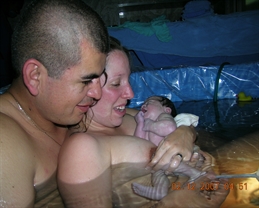- The background images used on this page are not royalty-free. Please use images from your own collection.
- The page SAMPLE is a "hidden" page that contains sets of elements grouped into "sections": Title + photo, Icons + text, text + icons + video, etc...
Select the section that best fits the design desired and copy/paste it onto your page (to “paste” in a specific location, right-click and choose Paste). Be sure to take the entirety of the section by selecting its external container (the one containing the background image or color).
- Important: each "section" must have one, and only one, inner container (element group) for the section content. The outer margins of this sub-container set minimum distances from section boundaries.
- The "Horizontal" button in the "Selection" menu controls the automatic centering of an element.
- To change the order of elements - i.e. place an element below another in a "relative" positioned container (like most of the content in the sections), use the Element Explorer on the left: green "arrow buttons" will appear when it is possible to change the order. Icons under an element and above the element group allow to put elements onto the same "line" and modify alignment.
- The entire header menu can be modified in its dedicated Layer (e.g. "Base_MenuRetractable"; simply change the page’s Layer to use a different menu). Use this to modify menu links (by copy/pasting existing links), change the colors etc. Note that these elements are pre-programmed to work with one another, so try to avoid “dragging” new ones on that could disrupt the general responsive behavior of the menu (favor using copy & paste).
- For more information, please consult the Wiki:
http://wiki.openelement.com/en/index.php?title=Responsive_Templates_%22Centered%22
Please delete this notice before publishing the final version of your website.
To change the menu’s links: edit, copy-paste, or delete the Link Elements within.
To hide an element without deleting it, use its property Visible.

El parto en agua es una herramienta de apoyo para la madre que la conforta, relaja y facilita el proceso, sin complicaciones, cuando se respeta el protocolo.
El bebé no necesariamente tiene que nacer dentro del agua, esto dependerá de lo que la madre prefiera en el momento y de las circunstancias que se presenten.
El parto en agua ayuda a la madre porque favorece la dilatación y acorta el tiempo y el esfuerzo de la labor. Disminuye la secreción de adrenalina y catecolaminas (hormonas que inhiben la dilatación) y debido a la mayor relajación favorecida por el agua calientita. Permite mayor movilidad a la madre, incrementa la secreción de endorfinas (hormonas inhibidoras del dolor) y disminuye la hipertensión arterial después de 10 a 15 minutos bajo el agua. Ayuda al bebé porque se acorta el trabajo de parto, lo que disminuye el riesgo de estrés fetal, sale a un ambiente semejante al que ha estado,. percibiendo cambios menos agresivos y logrando una adaptación más suave, al nacer permanece en los brazos de su madre e inicia el apego de inmediato.
Los médicos y clínicas u hospitales que favorecen este método, son partidarios del nacimiento humanizado, respetuoso y apoyan el contacto constante entre la madre y el bebé así como la lactancia inmediata y exclusiva con apoyo de una doula.
El Parto en agua se rige por protocolos específicos, por lo tanto debe llevarse a cabo siempre que esté presente una persona certificada para ello. Cuando el bebé nace bajo el agua no se ahoga ni bronco aspira, ya el respira hasta el momento en que la placenta se desprende o está fuera del agua y puede inhalar aire. El corte del cordón se hace hasta que éste deja de latir y como ya está pinzado, tampoco se contamina. El bebé no se enfría, porque permanece en el agua a una temperatura semejante a la que se encontraba en el útero materno.
Los elementos requeridos para un parto en agua deben ser los indicados en el protocolo, más algunos recomendados por la persona responsable y o la doula .
Para mayor información contáctanos dando click aquí Contacto.


